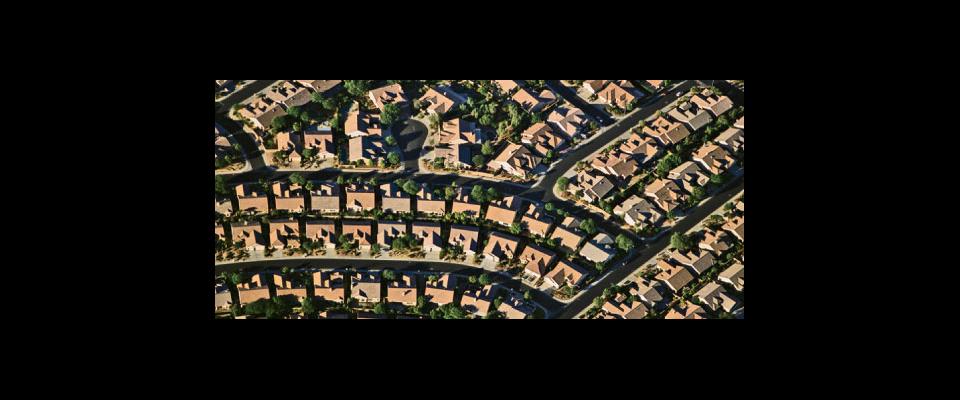If you’re considering ways to reduce urban heat and moderate global warming, cool pavements just seem like a no brainer. Asphalt, after all is dark; it absorbs heat. But light colored cement or asphalt treated with a whitish surfacing agent can reflect heat. That should make cities cooler and also reduce air conditioning demands, cutting back on electricity production and the planet-warming carbon emissions that spew from fossil-fueled power plants. Win-win, right?
Not necessarily. A recent study led by the Heat Island Group at Lawrence Berkeley National Laboratory and the University of California Pavement Research Center concluded that cool pavements often promise more than they ultimately deliver. While such materials can contribute to lower urban temperatures, improved air quality, and even lower greenhouse gas emissions due to reduced building energy consumption, their benefits may still be outweighed by their environmental costs.
The group took a holistic approach in their research, considering both the impacts of increased roadway reflectivity and an analysis of pavement materials over a 50-year time frame, including the extraction of the raw resources, manufacturing of the pavement, energy use in buildings potentially affected by pavement, and the removal and disposal—or recycling—of pavements. The inquiry expanded earlier research on possible urban cooling strategies.
One thing that the researchers confirmed is that optimal cool city strategies depend on geography to a significant degree, says Ronnen Levinson, a staff scientist with the Heat Island Group at the Berkeley Lab and the principal investigator for the study.

“If water is plentiful and the air is dry, even something like abundant lawns can help mitigate city heat,” Levinson says. “Vegetation increases the evaporation of water, and water vapor cools air. It’s the same principle as a swamp cooler. Trees typically don’t evaporate as much water as grass—the water has to travel up the trunk to the leaves, and that’s a much longer trip than going through a blade of grass—but they generally require less water than lawns and they can shade buildings, which reduces the heat from sunlight absorbed through walls and windows.”
Cool pavements—specifically cement concrete pavements made of concrete, rock, and sand—seem to promise a particularly big cooling dividend because their light color makes them highly reflective compared to asphalt concrete, admixtures made from bitumen, sand and rock. But cement requires much more energy to produce than bitumen, which is the residue that remains from petroleum refining. Cement making, in fact, is the nation’s most energy-intensive manufacturing process, and is particularly problematic because it requires an abundance of coal and coke (a solid fuel usually made from coal), public enemies when it comes to global warming.
Portland cement, the primary material used in most reflective (or “high albedo”) concretes, imposes high energy and CO2 emission costs, says John Harvey, a former professor of civil engineering at UC Berkeley and the director of the University of California Pavement Research Center.
“The…benefits that can be gained in reduced building energy use from [such] pavement surfaces [are] much smaller than the emissions and energy [penalties caused by] producing the … materials,” observes Harvey.
But what about simply coating asphalt with a tough, bright, white substance? Still not such a great idea, says Levinson.
“We looked at using light-colored polymer coatings, but they also involved a lot of energy consumption and carbon emissions,” said Levinson. “The bottom line is that over a 50-year period, the energy savings from polymer coatings were smaller than the energy and carbon penalties they imposed.”
The research also exposed other problems with cool pavements, observed Levinson. Among them is the fact that cool pavements are hard to keep cool because they’re difficult to keep light-colored and reflective. They get scuffed and darkened by car tires, dirt and pollution, and ultimately begin absorbing heat rather than reflecting it. Further, heat reflected by cool pavements is often directed onto walls and windows, which can jack up rather than reduce building energy use.
“It’s not really a case of asphalt versus cement concrete; that’s too simplistic. The actual designs of the pavement materials have a much greater effect on energy savings and carbon outputs than any broad cool pavement strategy.”
That doesn’t mean that cool pavements are a complete bust. Some gains may be made by tweaking the formulas for cement concretes, observes Harvey. The researchers determined that changes in concrete mix formulations can mitigate the energy and carbon problems to a significant degree, and that the full life cycle of paving materials—from production to recycling or disposal—must be considered to accurately gauge their true environmental impacts.
“You can reduce energy and greenhouse gas penalties by changing specifications for the concrete,” Harvey says. “Replacing a portion of the Portland cement with supplementary cementitious materials such as fly ash [a waste product of coal-fired power plants] is a good example. It’s not really a case of asphalt versus cement concrete; that’s too simplistic. The actual designs of the pavement materials have a much greater effect on energy savings and carbon outputs than any broad cool pavement strategy.”
Indeed, in some climes, certain types of low albedo pavements can help cool cities.
“In places where it’s hot and rains during the summer, such as Arizona, permeable pavements can provide some mitigation,” says Levinson. “These kinds of pavements are highly porous, and quite a bit of water can soak into them during storms. Then when it clears and heats up, the water evaporates out of the pavement and cools the air.”
But if the picture is mixed on pavements, reflective roofs are another matter, says Levinson.
“If you make the roof of a building more reflective, you don’t have the same problems you run into with pavements,” he says. “You reduce sunlight absorption by the building so it doesn’t get as hot, and you also get less heat convection from the building to the air, meaning the [ambient city] air doesn’t get as warm. Between 75 to 80 percent of the sunlight reflected by a roof literally leaves the planet: it’s reflected back into space without being absorbed or scattered by the atmosphere.”
Levinson notes that cool roofs are now widely acknowledged as an effective heat-reducing strategy by engineers, architects, and regulators.
“Title 24 [the California Building Energy Efficiency Standards] now requires white surfaces on all non-residential low-slope roofs,” Levinson says, “and there are also requirements for reflective roofs on homes in some parts of the state. So the technology and engineering for cool roofs is fairly mature. We’re also wrapping up research on cool wall approaches, and they look promising. But I think it’s clear from our work that cool pavements aren’t ready for prime time. It’ll require more development to make them less energy and carbon intensive, and to figure out ways to keep them reflective.”
The group created a “pavement life-cycle assessment” tool to help city engineers and managers evaluate the long term environmental impacts of different pavements.
While the study went a long way toward clarifying the cool pavement conundrum, it also confirmed a phenomenon that has long bedeviled researchers: garbled reporting of scientific findings in the popular press.
“People tend to think pavements are simple, but you can get bad results if you move ahead with that assumption,” says Harvey. “As we demonstrated, pavements and their effects are complex. Ronnen put out a very well-crafted press release on the Berkeley Lab website that was picked up by a trade magazine, but it was cut and presented in a way that totally confused our main points and drew the wrong conclusions. Competing industries are involved in pavements, and they have a lot on the line. So we received a lot of angry notes that we had to respond to and correct. When you have improper reporting on scientific studies, it can really hurt the credibility of the research.”




















